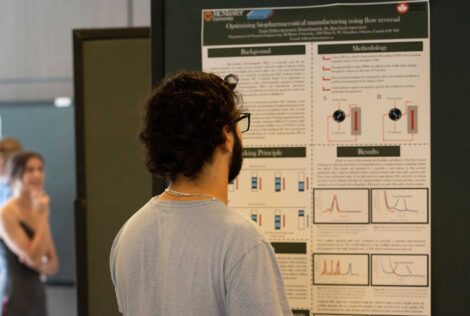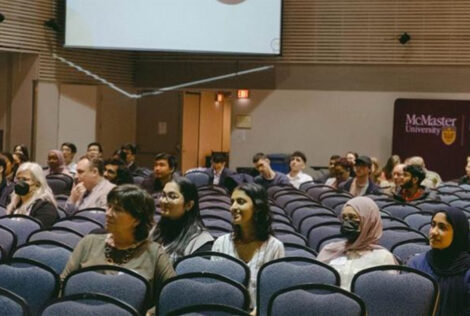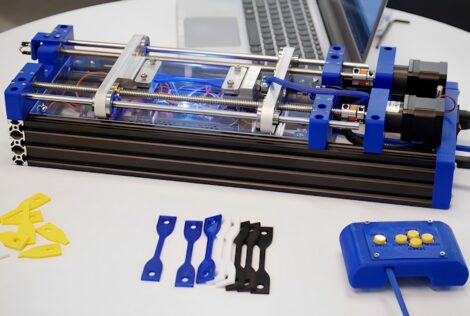
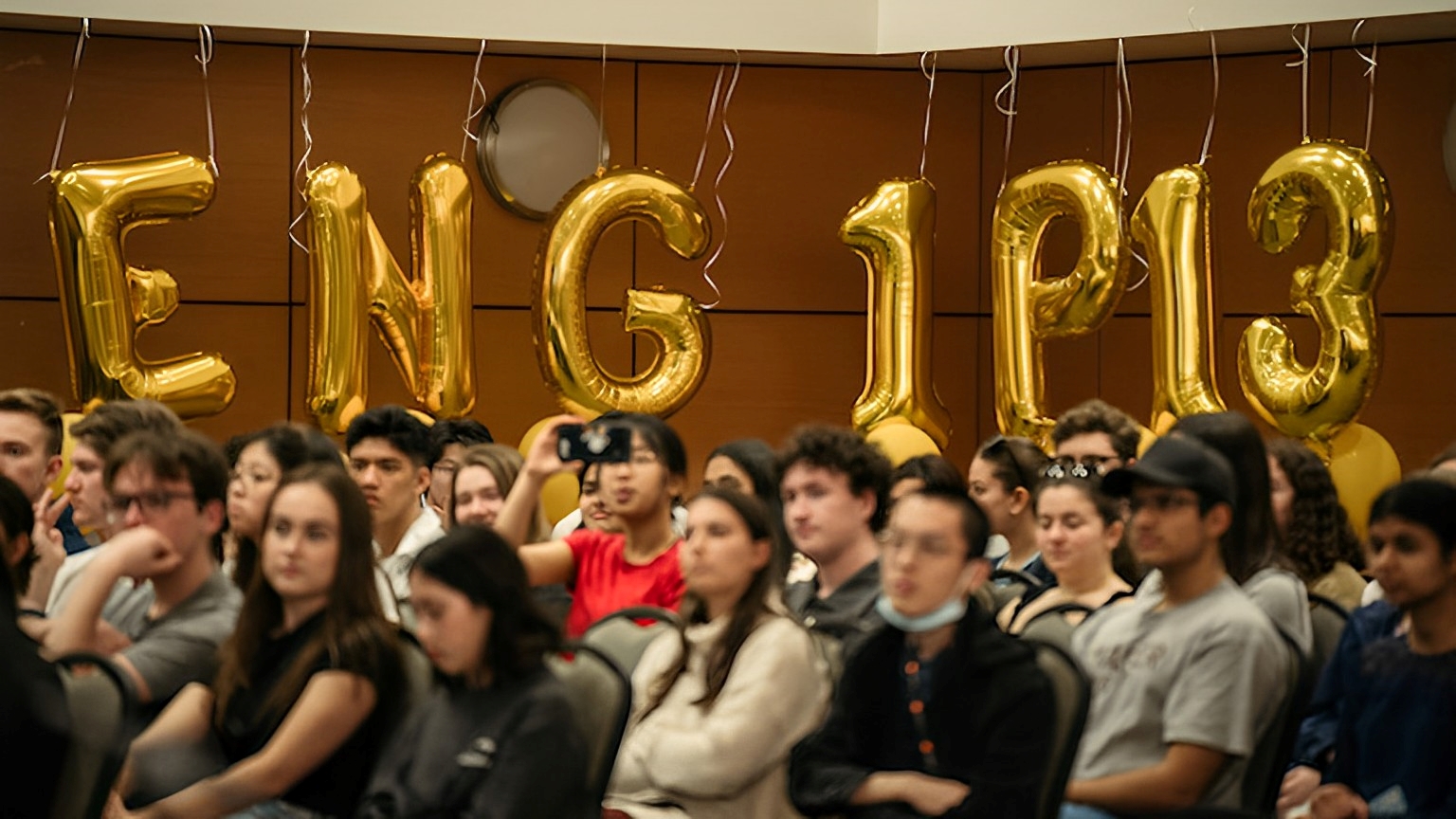
On April 12, first-year students in the Integrated Cornerstone Design Projects in Engineering course (1P13) gathered at CIBC Hall to demonstrate their innovative solutions to real-world issues.
1P13 launched in September 2020 as part of the redesigned engineering curriculum, The Pivot. Combining project-based and experiential learning to develop solutions to real-world problems, the reimagined curriculum teaches students to think outside the box and be future-ready engineering leaders.
The course has four diverse projects that tasks students to come up with unique designs to aid issues in healthcare, sustainability, accessibility and community, with the fourth and final design project presented at the annual showcase by the top finalists.
This year, tasked with developing engineering solutions to daily struggles encountered by clients Tim Nolan and his wife Kim, students created new devices that made everyday tasks accessible.
Tim Nolan was the former director of Student Accessibility Services at McMaster. He retired in 2020. After losing most of his eyesight due to diabetes in his 20’s, Tim dedicated over 30 years to his career at Mac to making campus more accessible for people of all abilities.
His wife, Kim started having mobility issues after being diagnosed with Multiple Sclerosis. She is now in a motorized wheelchair.

Students had the opportunity to meet with both Tim and Kim to hear about ways in which their day-to-day lives could be improved, and then worked in groups to find solutions.
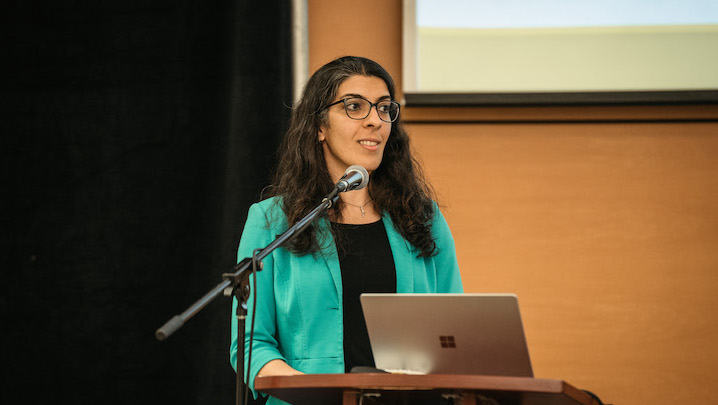
“The project is very open-ended, making it challenging for students to come up with ideas,” says Shelir Ebrahimi, a 1P13 class instructor.
“But that’s also where creativity comes in. They are provided with enough time and resources to take risks, try their ideas, get feedback from diverse groups of people including engineers, occupational therapists, biologists, etc.), fail, learn from it, and go back to improving their thoughts and designs as they progress on weekly basis.”
Learn about the design innovations from the top three winners:
1st place: Auditory Spice Rack
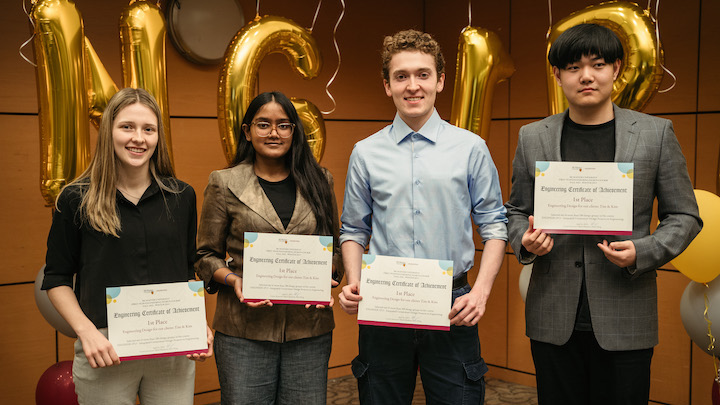
Group members: Madelyn Ritchie, Anindita Bornomala, Leopold Blew, Tianyao Zhang
We were tasked to create a device that helps our clients in their daily lives. Tim has a visual impairment, and thus sometimes has difficulty cooking; more specifically, differentiating spices.
This led us to develop the Auditory Spice Rack. This spice rack has the exact same functionality of any other spice rack but is more accessible for people with visual impairments or dementia. Instead of using the traditional printed labels to identify the spices, we chose to use verbal audio cues that are automatically played when the spice is selected. The user removes the spice container from the rack, the rack senses this and reads out the spice type to the user, the user places the spice container back in, the rack senses the container has come back and reads out the spice name again.
After listening to our client Tim and hearing the daily struggles he has had to face and overcome since his early twenties, (just a few years older than us), we knew we wanted to help him in some way. It motivated us to think of tasks that are done almost every day, but are possibly a struggle for Tim. This led us to cooking, where we then fell upon the idea of the Auditory Spice Rack.
2nd place: The Stack ‘n’ Slice!
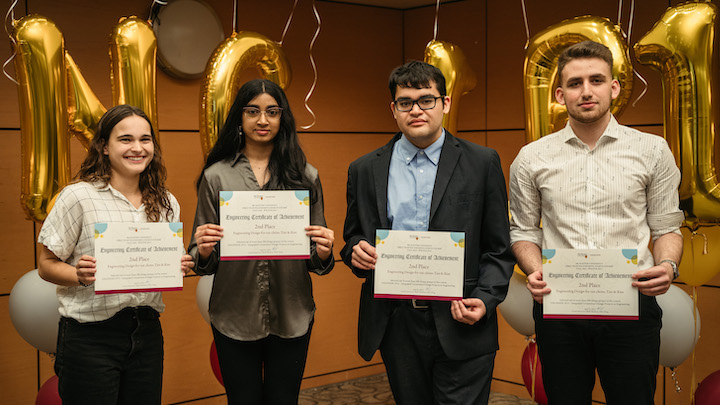
Group members: Erika Javornik, Sarvi Krishnan, Hemant Arora, Erika Javornik, Erion Keka
Our project is an accessible sandwich-making tool that provides guidelines to help stack and slice the layers of a sandwich for people with different abilities. With our project, we hope to encourage independence in the preparation of simple meals for diverse demographics.
The inspiration behind our project was being able to provide a simple tool that can empower people and offer them more independence. Creating something that has never been done before was a daunting yet incredibly meaningful experience.
3rd place: Automated Pill Dispenser
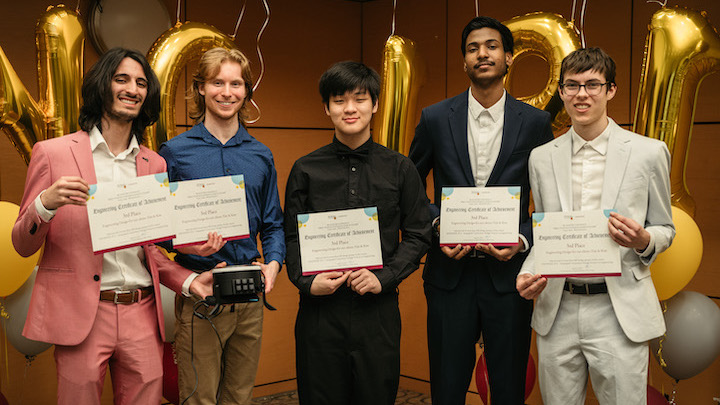
Group members: Lucas Yachouh, Jackson Beach, Franky Ngo, Nikolai Jagessar, Nicholas Brouwer
The objective of our project was to enhance the quality of life for Kim by assisting her with a task that necessitated refined motor skills. To this end, we developed a pill dispenser that simplifies the process of accessing medication, eliminating the need for her to frequently open pill bottles.
Our project is intended to aid individuals who experience challenges with the process of opening pill bottles and retrieving medication. We believe that our efforts serve as a proof-of-concept for the development of devices aimed at enhancing the lives of individuals with physical impairments, providing a cost-effective and efficient solution for those who lack access to consistent medication management assistance.
We were inspired to tackle this issue after one of our virtual visits with our client. During this visit, the client mentioned the struggle that they have daily with taking their prescription medicine. Often, this would involve them resorting to utilizing their teeth to open the pill bottles, resulting in pills being regularly dropped. Upon hearing this, as a group we were shocked at how inaccessible such a crucial part of their routine was, and we figured that this problem extended well beyond just our client. Thus, by addressing this we could have a far-reaching impact on our community.

